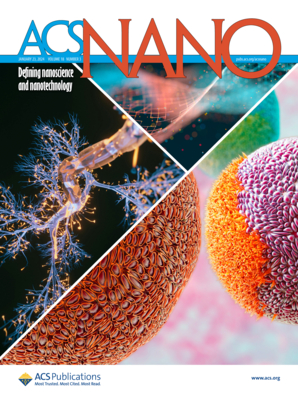利用局部界面晶闸管的可调性高效处理复杂神经网络
IF 15.8
1区 材料科学
Q1 CHEMISTRY, MULTIDISCIPLINARY
引用次数: 0
摘要
本研究开发了一种可扩展的(130 纳米)电阻开关忆阻器,具有丝状开关和界面开关两种功能,旨在实现神经形态计算。人们通常认为的噪声或波动被有效地用作界面开关的受控机制。所提出的忆阻器采用多层结构,通过抑制离子过迁移和减少泄漏路径来提高开关稳定性。此外,忆阻器在丝状模式下超过 1500 万次循环,在界面模式下超过 100 万次脉冲,显示了其可靠性。此外,在 85 °C 下进行的 104 秒保持测试证实了不同状态下的稳定性,肯定了其作为非易失性 CMOS 兼容元件的可靠性。虽然许多研究仅在 MNIST 数据集上验证性能,但这项工作还评估了更复杂的数据集,证明了所展示的忆阻器在监督学习中的稳健性。具体来说,在 MNIST 和时尚 MNIST 数据集上进行的监督学习模拟显示了较高的学习率,与数值训练的偏差为 4%,而在 CIFAR-10 和 CIFAR-100 数据集上进行的离线推理显示了编程错误累积造成的 2.5% 和 7% 的偏差,即使在这些高度复杂的数据集上增加了忆阻器数量。通过依赖于尖峰计时的可塑性进行无监督学习,进一步凸显了所开发的忆阻器在连接人工和生物范例方面的潜力,为实现高效的生物灵感计算架构提供了重大进展。本文章由计算机程序翻译,如有差异,请以英文原文为准。

Leveraging Tunability of Localized-Interfacial Memristors for Efficient Handling of Complex Neural Networks
A scalable (<130 nm) resistive switching memristor that features both filamentary and interfacial switching aimed at neuromorphic computing is developed in this study. The typically perceived noise or volatility was effectively harnessed as a controlled mechanism for interfacial switching. The multilayer structure for the proposed memristor enhances switching stability by curbing ionic overmigration and mitigating leakage paths. Furthermore, the memristors showcased their reliability by demonstrating more than 15 M cycles in the filamentary mode and 1 M pulses in the interfacial mode. Additionally, retention tests at 85 °C for 104 s confirmed the stability across different states, affirming its reliability as a nonvolatile CMOS-compatible element. While many studies validate performance solely on the MNIST data set, this work also evaluates more complex data sets, demonstrating the robustness of the demonstrated memristor in supervised learning. Specifically, supervised learning simulations on MNIST and fashion MNIST data sets indicated a high learning rate with <4% deviations from numerical training, while offline inference trained on CIFAR-10 and CIFAR-100 data sets revealed <2.5% and <7% deviations caused by programing error accumulation, even with increased memristor counts for these highly complex data sets. Unsupervised learning via spike-timing-dependent plasticity further highlights the potential of the developed memristor in bridging artificial and biological paradigms, offering a significant advance toward efficient and biologically inspired computing architectures.
求助全文
通过发布文献求助,成功后即可免费获取论文全文。
去求助
来源期刊

ACS Nano
工程技术-材料科学:综合
CiteScore
26.00
自引率
4.10%
发文量
1627
审稿时长
1.7 months
期刊介绍:
ACS Nano, published monthly, serves as an international forum for comprehensive articles on nanoscience and nanotechnology research at the intersections of chemistry, biology, materials science, physics, and engineering. The journal fosters communication among scientists in these communities, facilitating collaboration, new research opportunities, and advancements through discoveries. ACS Nano covers synthesis, assembly, characterization, theory, and simulation of nanostructures, nanobiotechnology, nanofabrication, methods and tools for nanoscience and nanotechnology, and self- and directed-assembly. Alongside original research articles, it offers thorough reviews, perspectives on cutting-edge research, and discussions envisioning the future of nanoscience and nanotechnology.
 求助内容:
求助内容: 应助结果提醒方式:
应助结果提醒方式:


